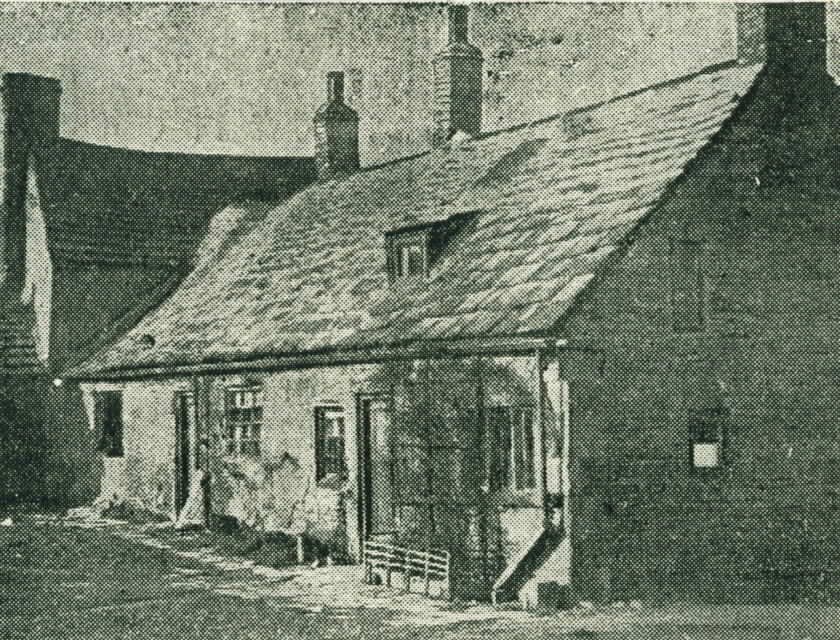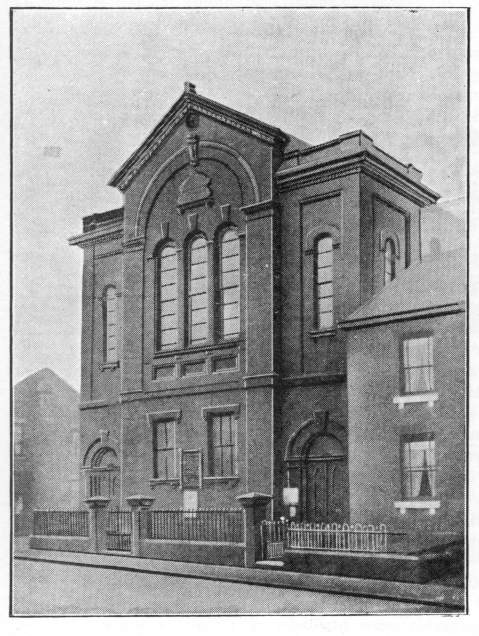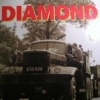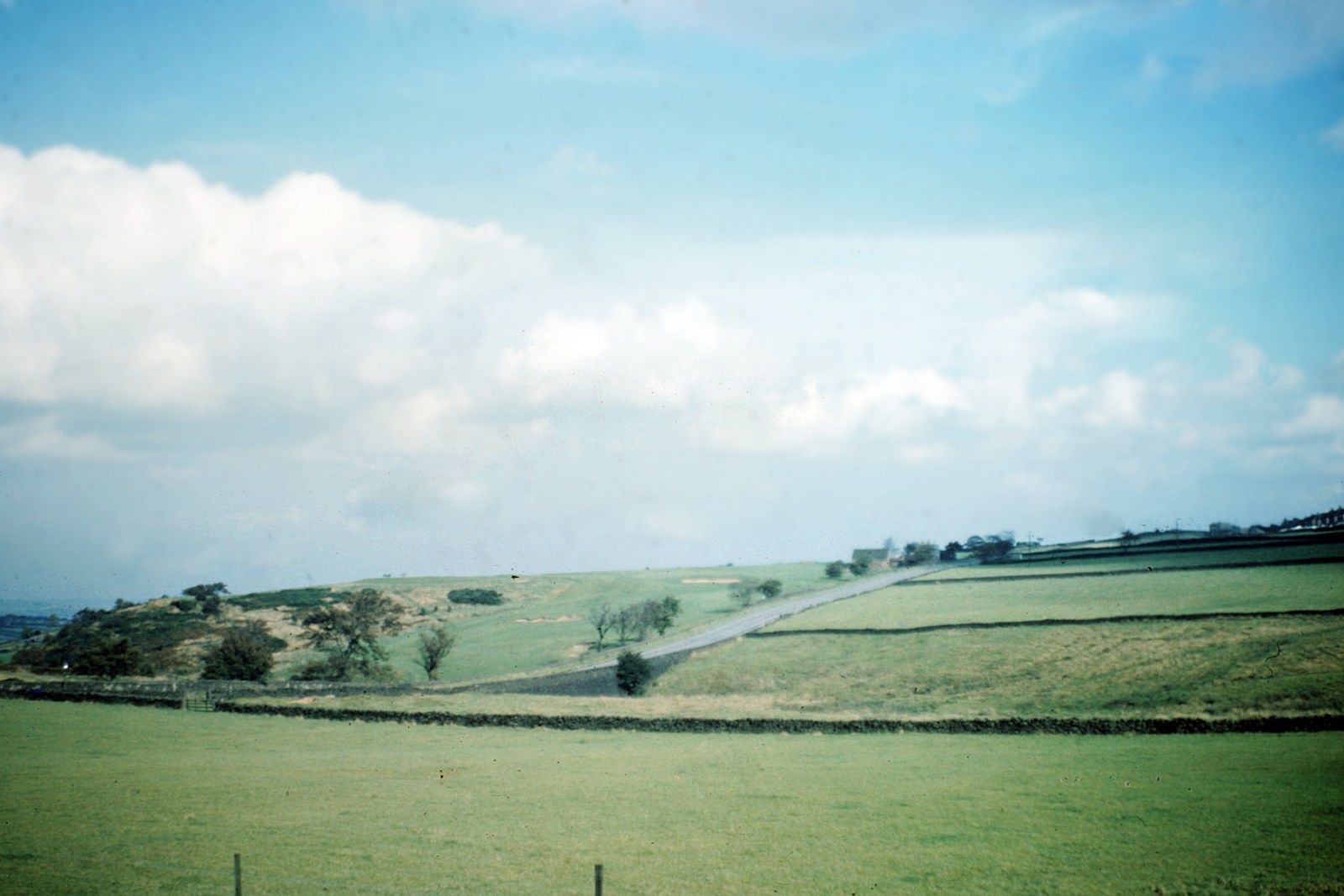Search the Community
Showing results for 'coal pit lane'.
Found 10,019 results
-
Some notes from "A Popular History of Sheffield" by J. Edward Vickers Anyone add to these? Or disagree with his suggestions? Orchard Street / Orchard Lane - 18th Century - orchards occupied the space between Church Street & Fargate. Fairbanks' map calls them Brelsforth Orchards. Robert Brelsforth - Master Cutler 1648 Market Place was originally - Bull Stake (bull baiting) Bridge Street - originally called "Under the Water" (flooding from the Don. Pond Street - the ponds that powered a number of mills Fargate - means the Far Way (gate meant way) Campo Lane - priests called churchyard "Camp Sanctus" Townhead Street - mid 18th Century known as Well Gate (surplus water flowwed into a pond (1746) Ratten Row - a "nest of filth & iniquity" a narrow lane at the bottom of Well Gate curving toward West Bar Green Trippet Lane - named after the Trippet family ( old family mentioned on Poll Tax return of 1379) Scargill Croft - Scargill family feature heavily in town affairs between 1560-1689 Between Norfolk Street & Midland Station Streets laid out by Vincent Eyre on Alsops Fields - agent of the Duke of Norfolk. Named after Duke's possessions and family. So we get Norfolk Street Howard Street Surrey Street Arundel Street & Eyre Street Snig Hill - after metal snigs - cart wheel brakes or from the eels which lived in the small ponds at the bottom of the hill (know as snigs) Angel Street from the famous coaching inn Bank Street from the private bank at the end of the street Figtree Lane - a fig tree grew in a garden on that area Sloped field between Campo Lane & West Bar bounded by Figtree Lane & Paradise Square - had been called Wade's orchard. Barker's Pool - after Mr Barker of Reservoir fame of Balm Green ( Cutlers used to use balm leaves to wrap around cuts to stop bleeding) Truelove's Gutter - now castle street - after Mr Truelove who owned property near the gutter or drain. Paradise Square - had been a cornfield called "Hicks Stile Field" and previously as "Pot Square" after pot traders. Wicker - Assembly Green - Yeomen & Freeman of Hallamshire gathered here once a year to muster on Tuesday after Easter. The last Assembly taking place was on Easter Tuesday 1715. Knock 'em down alley - was a narrow passage at the top of Townhead Street 'Cock Tail" - Furnace Hill after an Inn in the area. The Pickle - district between 1st Midland Railway (bottom of Spital Hill) & 12 O'clock inn. Sycamore Street - after the trees between Tudor Place and River Sheaf Button Lane - Button making once flourished there Goose Green - one at Attercliffe and Highfield Lamp Pool Lane - now Jansen Street. Sheep washing Black Lame Lane - now Broomhall Street Named after large Houses or Halls Chipping House Road Charnock Hall Dial House Road New Hall Road Cannon Hall Road etc
-
Great find....there's another article on that site on the making of pen-knife blades but rather short. The Fitzalan Works were between the canal and Effingham road where it joins Attercliffe road, - opposite the old Non-Pots club, but in those days Effingam road was known as Blast lane. The article does bring home just how hard people had to work for their living in those days. Imagine having to accurately hit a chisel many thousands of times a day with a 9lb hammer :o
-

T'owd Locals - New book on Sheffield Pubs by JR Wigley
dunsbyowl1867 posted a topic in Sheffield Pubs and WMC's
Here RichardB - an early Christmas present idea! T'owd Locals T'owd Locals (old public houses is the translation from yorkshire) is the latest Jack Wrigley book, focussing on old pubs. We have published several pub books but this is the first to concentrate on Hallam's historic hostelries (try and say that after a few pints). Available on youbooks later in October. ‘T’owd Locals’ contains more than 80 photographs of public houses taken during the late 1800s and early 1900s. These pubs were once at the centre of Sheffield life. Some of the pubs featured in the book still remain but many of these public houses of yesteryear are long forgotten. The photos do not just show the architecture of the pubs but more interestingly, captures snapshots of the atmosphere and living conditions of the time. It also shows how dramatically Sheffield has changed and developed. As well as the public houses, the pictures show us horse drawn coaches, adverts for rag, bone and skin merchants and the launch of the new tramway system in 1901. We also see scenes of life before the First World War, with a Whitsuntide procession going past the George and Dragon on Bank Street. This collection shows a Sheffield that is unrecognisable today. For example, it shows the Gale and Hullet’s Commercial Hotel as it stood at the corner of Haymarket Street and King Street in the 1890s. This building disappeared forever on December 8 1940 when it was directly hit during the Blitz. The Tontine Inn, Haymarket, which was Sheffield’s main coaching inn, is also featured. The Wilkinsons store now occupies the site where this important building once stood. Back then, public houses had a much more important role in society and were at the heart of many communities. The book shows us the Banner Cross Hotel on Ecclesall Road in 1920, where the inquest of murderer Charlie Peacelat was held. We also see the Fox and Grapes Inn on Meadowhall Road where miners used to collect their wages under the ‘Butty System’. The book includes photos of The Ashopton Inn, Derbyshire, which was a popular resort away from the grime of Sheffield. The Ashopton Inn disappeared in the 1930s with the construction of the Ladybower reservoir. Similarly, we see the Angel Inn on Button Lane. The site where this once popular local stood is now somewhere under Furnival Gate. The pictures show a completely different way of life, with people standing outside the public houses dressed in Edwardian and Victorian clothing. They show coach holidays setting off from the pubs and groups of children playing outside the establishments. “I was minded to show not only the buildings but also some of the atmosphere of the period,†J.R Wrigley says of his collection. The photos record an era that is long gone, “After most of our theatres and cinemas went we now see the disappearance of many of our pubs. One by one the shutters are going up. Our Victorian heritage has either been demolished or gutted,†Wrigley adds Many of the photos come from the collection of the late Horace Clayton who was a voracious collector of old Sheffield photographs and postcards and a great friend of the author. <Previous Next> Oct 13, 2008 at 09:40 AM http://youbooks.co.uk, Powered by Mambo and Designed by SiteGround web hosting -
This would appear to be my contribution, some old, some new. Probably more that you asked for Bar Coast Division Street, S1 (1998) Devonshire Arms (1825- ) Dolphin Hotel 37 Division Street (1845- ) Forester's Inn/Yorick/The Yorl/Olive Bar 75 Division Street (1834 - ) John Bull 126 Rockingham Street (1871 - ) Lloyds No 1 2-12 Division Street (1999) Manchester 4 Division Street (1849 - ) Mansfield Hotel 73 Division Street (1871 - ) Original John Bull 6 Division Street (1846 - ) Union 1 Division Street (1837 - ), became the Albert Pub, usually listed as 2 Coal Pit Lane (Cambridge Street) White Lion/New White Lion 61 Division Street (1871 - ) Yates's Carver Street/Division Street (1993) Yorkshire Stingo 50 Division Street (1833 - ), site of Fire Station. Prince of Wales/Frog and Parrot 94 Division Street & 37 Westfield Terrace, S1 (1871 - ) There are additional details (Keepers names mainly) and some photos listed in the main Pubs A-Z threads. Additions/corrections gratefully received; especially the keepers of those pesky modern Pubs/Bars - Bar Coast .... etc etc Welcome to the Site Hope you find something of interest and that you are willing and able to contribute.
-
Can't let that go Heeley was a big area but it wasn't in Highfield; and neither was Highfield in Heeley. I suppose Sheffield Wednesday FC was formed on the border of Heeley and Highfield. I did read somewhere that it was formed from the Wednesday Cricket Club who used to play on the pitch behind the Sheaf House Hotel on Bramall lane. This - the Sheaf House Ground was later covered by the SCT bus garage and Laver's Saw Mills. The Owls later used some fields at Olive Grove and elsewhere before they settled at Owlerton. There's very little detailed info on the Sheffield FC website - perhaps there's an official published history you need to buy
-
Firth Park and its Surroundings Bell Houses demolished c 1925 - I am currently researching local history and collecting material with a view to writing a book about the Firth Park area and its surroundings. Firth Park did not exist before the opening of the actual park in 1875 and was totally rural. Since then the whole area around has changed rapidly over the years, more so in the last 40 or 50 years. If you any information, photographs, memories or stories you would be willing to share with me about the past, please get in touch. This can be about school, work, play, church, the way we lived, housing, the people we knew or simply some story or memory handed down. Photographs can be copied by myself and returned to the owner if required. The main area of coverage will be Firth Park, Page Hall, Fir Vale up towards Firs Hill, Longley, Sheffield Lane Top, up towards the Flower Estate though anything of particular interest just outside these areas may be included. If there isn't sufficient material for a book then everything collected will be deposited in the Local Studies Library in Sheffield so it isn't 'lost'. Thanks
-
A few notes mentioning Sheffield from "The Plimsoll Sensation" by N Jones p. 2006 Plimsoll's family moved to Regent Street on 22nd January 1838 when he was 14. He received education at Dr Samuel Eadon's school and later at the People's College(founded in 1842 by Robert Bayley, a Congregational minister). His 1st job for 2 years was as a lawyers clerk - for Henry Waterfall a Sheffield Solicitor and then worked for 10 years as a clerk in the brewery of Thomas Rawson and Co. When he was 15 he had seen chartists march through Sheffield agitating for social reform and prtesting against low wages and unemployment and was shocked that him local church did not support them. He showed potential at an early age as a public man and wrote speeches for the Mayor of Sheffield Thomas Birks and was a stalwart of the Local Liberal club. In 1851 he was Secretary of Sheffield's Great Exhibition Committee and organised exhibits for the Sheffield Court in Hyde Park. The Court was the largest of any single town and was a notable success. Long before he became known as the "sailors friend" he was know as a benefactor of the miners and wa known as a "miners friend" in 1852 he organised subscriptions for the relief of 24 widows and orphans after an explosion which killed 50 men at Warren Vale Colliery at Rawmarsh. Declared a bankrupt in 1855 (at the age of 21) after a failed business venture seeking to transport coal from Yorkshire to London by rail instead of by sea, he was suspended from his membership of the Nether Congregational Church in Sheffield though later reinstated in 1856. In his mid 30's he met Eliza Ann Railton, stepdaughter of John Chambers of Newton Chambers & Co and granddaughter of the original Mr Newton. Plimsoll approached Chambers to enlist him in his scheme to transport coal from local pits to London and he offered Plimsoll a job as a clerk. They marries on 1st October 1857 in Ecclesfield Church. In 1864 he purchased Whitely Wood Hall as a 2nd home which had to be sold to cover legal fees in 1873. in 1865 he stood as a Liberal candidate for Parliament in Derby and was unpopular with the local satirical paper the Derby Ram who lampooned him as "Plumpsoul" and his country home as "WhiteLie Wood". He was not successful. In 1866 as president of the Sheffield Reform League he chaired a meeting of 12,000 that condemned the government and police after an incident known as the Hyde Park riot in London. He was elected as a Liberal MP in 1868 when the Electoral Reform Act widened the franchise. He was characterised as a poor speaker but had taken inspiration from men such as the brewer Thomas Rawson who, soon after the battle of Waterloo, had demanded the vote for every adult citizen (in Paradise Square). His 1st speech was described by his fellow Sheffield MP - Antony Mundella as a bad job and he had talked "rot" One of his 1st mention of his sea campaining work was at a speech in Fulwood Chapel in December 1868 he described his election as an opportunity to "help those in peril on the sea". His role as a "miners friend became complicated in 1869 when 800 miners were locked out of Newton Chambers pits. Police and troops were involved and the stress led to the death of Chambers in June 1869. In 1870 he moved the insertion of 3 clauses in the Merchant Shipping Bill that would provide an inspection of all ships, a maximum load line and prohibiting insurance of any ship to more than 2/3rds of its value. He received much support from WC Leng in the Sheffield Daily Telegraph. Plimsoll line became law in 1876. He stood for Sheffield Central in 1885 and lost.
-
Noon at Sheffield. NOON AT SHEFFIELD. TIS twelve—the tinkling chimes from yonder bill Sound forth the hour, the welcome hour to those Who, close at work from early dawn, have plied Their changeless tasks : in crowds now isssuing out, They speed along the streets. Here as I sit, At this small casement, poring on my books, I hear their tread, and oft my truant eye Looks out to see who 'tis that makes the noise. There goes the smith with face of sooty hue And leather apron flapping as he strides, Not mindless of his dinner, smoking hot, In fancy's hungry eye. Close at his heels A train of fellow-labourers plod along, In age, size, garb, and features varying much, But sullied each with marks of sombre tint That speak them of a trade : yet not without Some chance admixture of a different class. The miller, mealy-faced and powdered o'er, Mingles conspicuous in the dusky train, And the spruce shopman, and the ruddy lad fresh from the conntry-air, bespattered high With clayey soil, unlike the coal-black mud That clogs his neighbours' heels. To various parts The eager tribes are thronging ; they form Four different currents meeting a a point, Children and men and females. Mark the girl Who now on pattens nimbly clatters by, In prime of life, and yet her youthful face Displays no roses galher'd in the breeze— The mountain-breeze that feeds the cheek of health : Pent up in airless rooms from morn to night, She labours at her tasks, and bending gives The steel its form or polish, plodding o'er The same dull round of toil a thousand times : To cheat the tedious hours, with random voice Perchance she sings, or with her friends around In converse joining, hears the merry tale Or jest—alas ! not always chaste and pure, Or such as youthful maiden ought to hear ! — Oh ! Commerce, worshipp'd idol of the land, Though thousand blessings wait upon thy steps, Yet crimes and curses mingle in the train ; And oft in thy dark cells, thy spacious halls, Thy crowded houses, vice usurps the sway : There oft the virgin's cheek forgets to blush, There oft the snow of chastity is soil'd. Numbers can make the jest pass lightly off, Which, whisper'd to a solitary girl, Would call the burning virtue to her cheeks, And rouse indignant modesty to arms; There heard with shameless laugh, till, deeply stained, They act a part familiar to their ears, Ana fall—the victims of lascivious tongues. Past is the throng ; the street now silent grows, Or haply here and there a lonely man Disturbs the quiet as he passes by ;— A momentary calm, for bursting loose, Their frugal dinner o'er, forth rush the hoys Intent on various sports, and, clamouring loud In language barbarous to the tutor'd ear, Vent the wild joy of youthful liberty. The man, sedater, loiters at his meal, And tastes the well-earn'd pleasures of repose, Till, the short respite o'er, again he seeks The scene of labour with renascent strength, Again to toil that he may rest again. Sheffield, Feb. 13, 1818. -------------------------- Gosh !!!! --------------------------
-
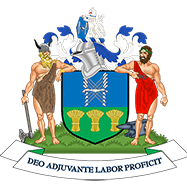
Pop Art of Sheffield's King Mojo Club and Beyond
Sheffield History posted a topic in Sheffield History Chat
Pop Art of Sheffield's King Mojo Club and Beyond Take yourself back to the swinging 60s and the club where it all happened .. Jimi Hendrix, the Beatles, the Small Faces. Mojo is back! The book will be released on October 17th, Peter Stringfellow’s 68th birthday. There will also be a book signing to be held on November 3rd, from 7.30pm at Trippett’s Wine Bar, Trippett Lane. £1 from every Mojo sale will go to Sheffield Children's Hospital. This fascinating book reveals a glimpse into the pop art history of Sheffield’s most famous club, King Mojo. The book is produced by Mojo Club owner Peter Stringfellow and artists Dave Marvell and Paul Norton. All author proceeds from the book are being donated to the Sheffield Children’s Hospital Charity. Peter Stringfellow talks of how the Mojo Club originally became decorated with art, “Realising the club looked a little austere, I painted African warrior dancers with full headdress and tiled mirrors for eyes, the reason being I couldn’t paint real people. The effect was surreal and looked great.†This look through the history of pop art in Sheffield includes the famous Mojo Club as well as The Ark Club, Broadway, The Penthouse, Chesterfield’s Victoria Ballroom and even the C&A shop. It is a real slice of local history. The book also looks at the artists who produced this art and looks at how it affected them. Paul Norton says of his days painting the King Mojo club, “Sometimes I can still smell the paint and hear the music, and I am sure there were times when I could smell the music and hear the paint!†Through looking at how the pop art developed within these clubs we see how culture developed from gangster art painted on the walls, to psychedelic and flower power art. The book contains posters, adverts and membership cards from the clubs as well as pictures of paintings on the walls. These paintings ranged from the original African Warriors and stunning flower power murals of Medusa in Mojo to the biblical murals in The Ark Club. These clubs gave many young artists the chance to express their creativity as well as a fantastic sight to the many people and famous faces who visited them. So, Pop Art of Sheffield’s King Mojo is an important piece of Sheffield history and will be a welcome walk down memory lane for anyone who remembers it as well as a stunning collection of art for anyone seeing them for the first time. The book is published by http://www.youbooks.co.uk and is priced at £9.99. -

Pop Art of Sheffield's King Mojo Club and Beyond
Sheffield History posted a topic in Sheffield History Chat
Pop Art of Sheffield's King Mojo Club and Beyond Take yourself back to the swinging 60s and the club where it all happened .. Jimi Hendrix, the Beatles, the Small Faces. Mojo is back! The book will be released on October 17th, Peter Stringfellow’s 68th birthday. There will also be a book signing to be held on November 3rd, from 7.30pm at Trippett’s Wine Bar, Trippett Lane. £1 from every Mojo sale will go to Sheffield Children's Hospital. This fascinating book reveals a glimpse into the pop art history of Sheffield’s most famous club, King Mojo. The book is produced by Mojo Club owner Peter Stringfellow and artists Dave Marvell and Paul Norton. All author proceeds from the book are being donated to the Sheffield Children’s Hospital Charity. Peter Stringfellow talks of how the Mojo Club originally became decorated with art, “Realising the club looked a little austere, I painted African warrior dancers with full headdress and tiled mirrors for eyes, the reason being I couldn’t paint real people. The effect was surreal and looked great.†This look through the history of pop art in Sheffield includes the famous Mojo Club as well as The Ark Club, Broadway, The Penthouse, Chesterfield’s Victoria Ballroom and even the C&A shop. It is a real slice of local history. The book also looks at the artists who produced this art and looks at how it affected them. Paul Norton says of his days painting the King Mojo club, “Sometimes I can still smell the paint and hear the music, and I am sure there were times when I could smell the music and hear the paint!†Through looking at how the pop art developed within these clubs we see how culture developed from gangster art painted on the walls, to psychedelic and flower power art. The book contains posters, adverts and membership cards from the clubs as well as pictures of paintings on the walls. These paintings ranged from the original African Warriors and stunning flower power murals of Medusa in Mojo to the biblical murals in The Ark Club. These clubs gave many young artists the chance to express their creativity as well as a fantastic sight to the many people and famous faces who visited them. So, Pop Art of Sheffield’s King Mojo is an important piece of Sheffield history and will be a welcome walk down memory lane for anyone who remembers it as well as a stunning collection of art for anyone seeing them for the first time. The book is published by youbooks.co.uk and is priced at £9.99. -

Pop Art of Sheffield's King Mojo Club and Beyond
Sheffield History posted a topic in Sheffield Nightclubs
Pop Art of Sheffield's King Mojo Club and Beyond Take yourself back to the swinging 60s and the club where it all happened .. Jimi Hendrix, the Beatles, the Small Faces. Mojo is back! The book will be released on October 17th, Peter Stringfellow’s 68th birthday. There will also be a book signing to be held on November 3rd, from 7.30pm at Trippett’s Wine Bar, Trippett Lane. £1 from every Mojo sale will go to Sheffield Children's Hospital. This fascinating book reveals a glimpse into the pop art history of Sheffield’s most famous club, King Mojo. The book is produced by Mojo Club owner Peter Stringfellow and artists Dave Marvell and Paul Norton. All author proceeds from the book are being donated to the Sheffield Children’s Hospital Charity. Peter Stringfellow talks of how the Mojo Club originally became decorated with art, “Realising the club looked a little austere, I painted African warrior dancers with full headdress and tiled mirrors for eyes, the reason being I couldn’t paint real people. The effect was surreal and looked great.†This look through the history of pop art in Sheffield includes the famous Mojo Club as well as The Ark Club, Broadway, The Penthouse, Chesterfield’s Victoria Ballroom and even the C&A shop. It is a real slice of local history. The book also looks at the artists who produced this art and looks at how it affected them. Paul Norton says of his days painting the King Mojo club, “Sometimes I can still smell the paint and hear the music, and I am sure there were times when I could smell the music and hear the paint!†Through looking at how the pop art developed within these clubs we see how culture developed from gangster art painted on the walls, to psychedelic and flower power art. The book contains posters, adverts and membership cards from the clubs as well as pictures of paintings on the walls. These paintings ranged from the original African Warriors and stunning flower power murals of Medusa in Mojo to the biblical murals in The Ark Club. These clubs gave many young artists the chance to express their creativity as well as a fantastic sight to the many people and famous faces who visited them. So, Pop Art of Sheffield’s King Mojo is an important piece of Sheffield history and will be a welcome walk down memory lane for anyone who remembers it as well as a stunning collection of art for anyone seeing them for the first time. The book is published by youbooks.co.uk and is priced at £9.99. -
Gramps, Look at this map! I am spot on where I ORIGINALLY said the Blyth Wheel was in 1740. Just southeast of of Carfield Lane where I have been finding the grindstones.
-
1901 directory Infirmary Road 160-2 Thomas Bolsover -Draper ----------------- Gilpin Lane --------------- Gilpin Street --------------- 168 Samuel Bingham -vict 170 John Henry Lane -tobacconist Would put the Five Alls at the wrong side of Gilpin Street, to be the co-op 1963 Kelly has Darby's motor engineers and garage at 168-180 later to become Kelvin Garage
-
I seem to recall reading that there was some sort of windmill at Shiregreen/Firth Park area - I suppose Windmill Lane may give it away?
-

Methodist Churches in Sheffield
Guest replied to a topic in Sheffield Churches & Religious Buildings
I posted this pic of Ebeneezer Wesleyan chapel, Bramall lane on a another thread... There are other photos of chapels in my convoluted file system which I'll try and dig out. -
Mike. Photo s09653 Haymaking at Peter Wood shows my dad on the far right. My maternal great grandmother was a Woodhouse, and it was her son that farmed Peter Wood. The farm was on the right near the bend going up Douce Croft Lane. Grandma Woodhouse lived at Jeffery green in one of a row of four cottages lower down the valley. Hope this helps.
-
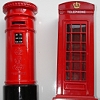
Was This The First Chinese Restaurant?
ukelele lady replied to mickjj's topic in Sheffield Restaurants & Cafes
JackD i believe you were right. I've had the map out and it looks like the Rickshaw was on the corner of Westhill Lane and Eldon Street. As for tsavo , I can't remember what I had but it all tasted good. lol -
George Ulyett - all round Cricketer, made debut at Bramall Lane, played for Yorkshire and England against Australia. Born Pitsmoor, Sheffield 21.10.1851 died 18.6.1898, interred Burngreave Cemetery. See Wikipedia for full details.
-
I remember this church was still standing up to about 1977ish, as we caught our school bus opposite, with the Rev P Asquith on the notice board who also happened to be one of the RE Teachers at Newfield School. All of that side of Bramall Lane was demolished (except for the Railway and Cricketers) to make way for a dual carridgeway which never materialised (along with the Heeley by-pass)
-
Gramps, I am really interested in this subject, living next door to the Meersbrook. Any information would be helpfull.I can see where the dam possibly was . Also , in the woods there are some stones which look as though they were some sort of building/?. I have also collected lots of grinding wheels from the brook.The wheel was possibly at the bottom of Cat Lane.
-
The premises would have been pretty much opposite the top of Hobart Street, behind what is now Sure Start. (I live nearby, and my curiosity got the better of me, so I tried to calculate approximately where it would have been.) The original houses on the evens-side that are still standing, finish at number 106. The terraced houses' numbering doesn't go any higher. The rest of the "evens" houses, right up to the junction with Sharrow Lane, were all demolished. (and the flats were built on the site)
-
Think you've confused Wadsley Hall and Wadsley House, Ceegee, which were two separate buildings. Wadsley Hall, still exists on Far Lane. Wadsley House was at the bottom of Laird Rd, and demolished in the 1950s. See previous topic: (sorry about the missing pics) http://www.sheffieldhistory.co.uk/forums/i...81&hl=laird I was surprised not to see mention of the lime pits in the sale notice as these were situated roughly between Dykes Hall Rd, Collin Avenue and Laird Rd. The gardens in that area are still very limey. I was told of this by an eighty year old gardener, who also said that the lime from these pits was used in the building of the Sutton Estate. Can anyone confirm this?
-
Plain Talker Like you I used to think that the house where the murder took place was on Psalter Lane. Then I saw a drawing made by Sheffield Police of the murder scene.The Dysons lived in the second house above what is now known as Marmion Rd. Dyson was shot near to the front of the first house , near to where the outside toilets were, they are now gone. I think both houses are now an estate agents. The gennel story is popular but also untrue he escaped into fields directly opposite the scene on the other side of Ecclesall Rd., no houses where there at that time. From there its believed he got a train to Hull from Attercliffe Station. The Dysons did move from Darnall, 40 Britannia Rd, the Dysons lived at 36, both houses are now gone but Britannia Rd still exists. Its anybodys guess whether he had an affair with Mrs Dyson, I think the evidence points that way but she denied it in court and the defence were unable to break her. No need to"beg pardon" Peace is surrounded by myth and I suspect most were started in his time and are now firmly entrenched. He continues to fascinate Sheffield people.
-
thanks for that pointer there, Siren. I do beg pardon. I remember the story of the Stag being used for an inquest related to a death associated with Peace's lover (Mrs Dyson) and Imust have mixed the death of the police officer up and joined it to the shooting of Mr Dyson. However, I am certain the house involved was on Psalter Lane, at the Banner Cross end. (there's some link to the Gennel beside the Banner cross pub which I believe was used by Peace to flee) I believe that the Dysons moved to Banner Cross, from Darnall, in an effort to prevent Peace from finding them after Mrs Dyson ended the affair.
-
Does anyone know what the field was called that was to the east of Blackbrook Rd before the estate was built there in the early 1960s? My mother would be most grateful. This is a picture (1958) of the field from Blackbrook Rd looking towards Redmires Rd, with the golf course beyond and you can just see Crimicar lane in the distance and the edge of the old isolation hospital. Thanks in advance if anyone knows.




